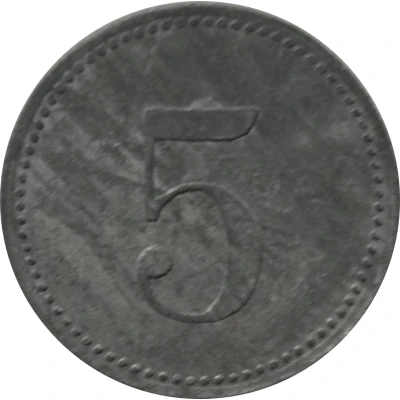


© Willem63 (CC BY-NC-SA)
5 Pfennigs - Altdorf
1917 year| Zinc | 1.4 g | 18.0 mm |
| Issuer | City of Altdorf bei Nürnberg (Federal state of Bavaria) |
|---|---|
| Emperor | William II (Wilhelm II) (1888-1918) |
| Type | Standard circulation coin |
| Year | 1917 |
| Value | 5 Pfennigs (5 Pfennige) (0.05) |
| Currency | Mark (1914-1924) |
| Composition | Zinc |
| Weight | 1.4 g |
| Diameter | 18.0 mm |
| Thickness | 0.9 mm |
| Shape | Round |
| Technique | Milled |
| Orientation | Medal alignment ↑↑ |
| Demonetized | Yes |
| Updated | 2024-10-04 |
| Numista | N#312332 |
|---|---|
| Rarity index | 92% |
Reverse
Beaded rim surrounding denomination centered
Script: Latin
Lettering: 5
Edge
Plain
Interesting fact
The 5 Pfennigs - Altdorf 1917 coin from the City of Altdorf bei Nürnberg (Federal state of Bavaria) made of Zinc weighing 1.4 g is interesting because it was produced during a time of economic and political turmoil in Germany. The coin was minted in 1917, during World War I, when the country was experiencing severe economic difficulties, including inflation and a shortage of metals. As a result, the German government was forced to use alternative metals, such as zinc, to produce coins. This coin is a unique example of how war and economic hardship can impact the production of currency.